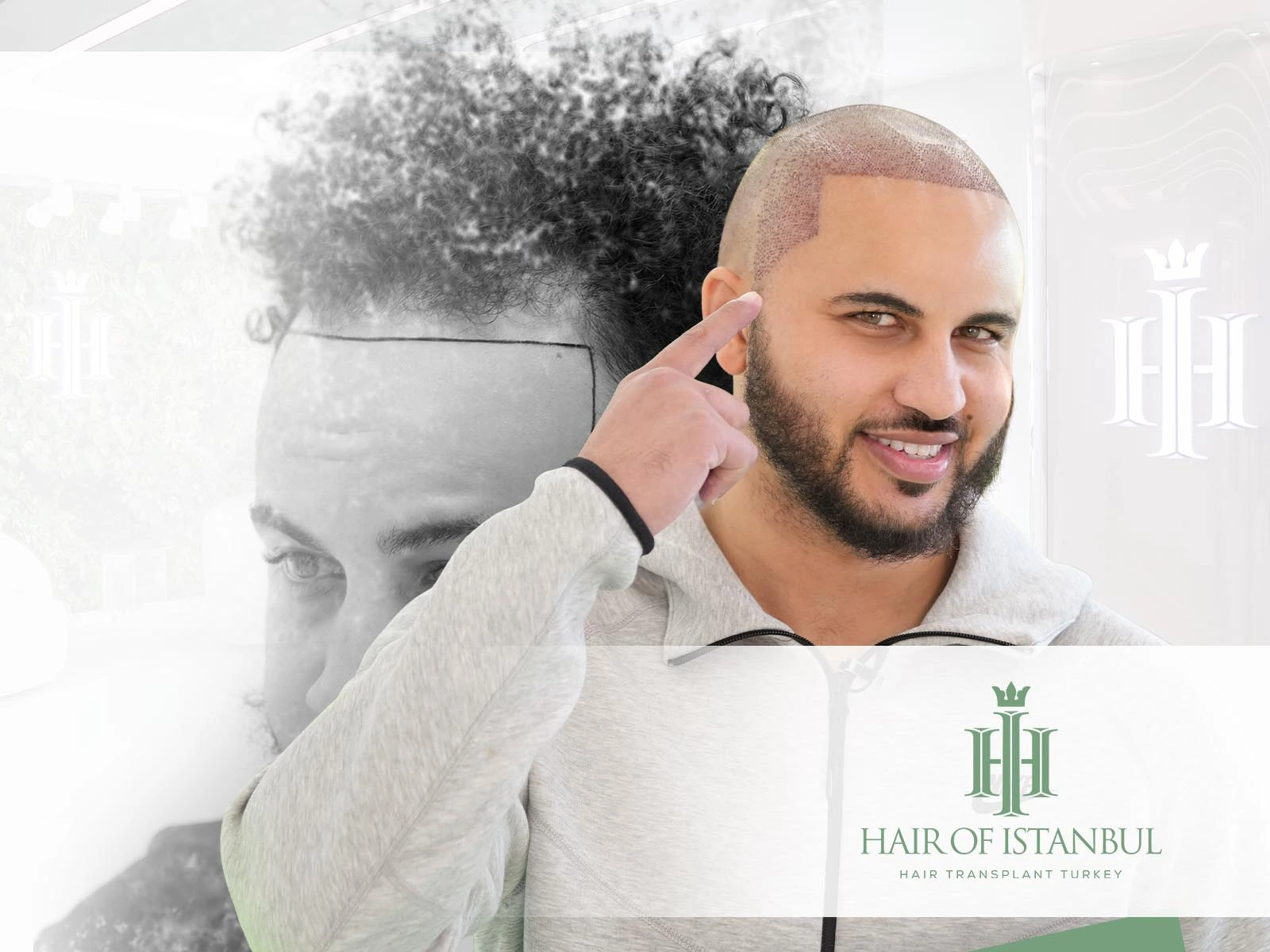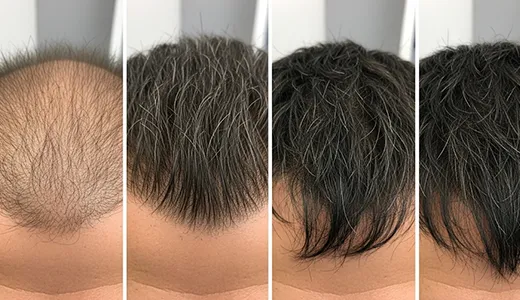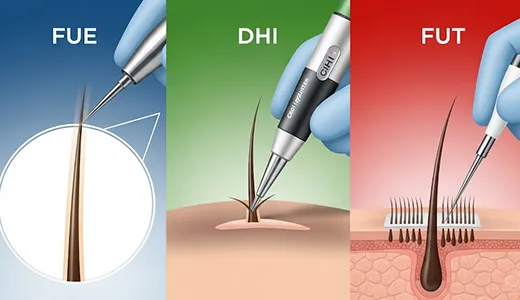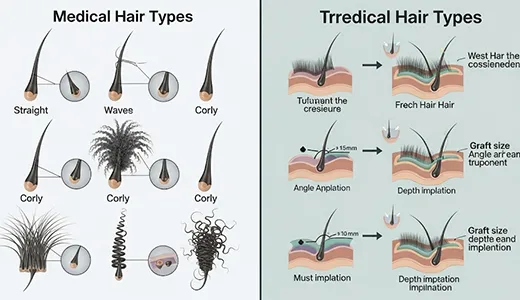
Hair Transplants: Comprehensive Guide to Techniques, Recovery and Results
Hair loss affects millions worldwide, impacting self-esteem and daily life. Fortunately, hair transplants offer a reliable and natural solution. This comprehensive guide explores the latest techniques, recovery process, and long-term outcomes. Whether you’re considering your first procedure or looking to improve previous results, this article offers detailed insights.
Understanding Hair Transplants
A hair transplant is a surgical procedure that moves hair follicles from a donor area—typically the back or sides of the scalp—to a balding or thinning area. The goal is to achieve natural, permanent hair growth. Modern advancements, especially the FUE hair transplant and DHI hair transplant, have transformed outcomes, offering minimally invasive options with visible results.
Bu gönderiyi Instagram’da gör
Techniques Used in Hair Transplants
FUE (Follicular Unit Extraction): Individual follicular units are extracted using a micro punch tool. It’s minimally invasive, leaves no linear scar, and heals quickly.
DHI (Direct Hair Implantation): Follicles are implanted directly using a Choi implanter pen, allowing for precise placement and natural angles.
Both methods are available at top-tier clinics like Hair of Istanbul, where procedures are personalized for every patient.
Is Hair Transplant Right for You?
Ideal candidates for hair transplants include:
-
Individuals with male or female pattern baldness
-
Patients with stable donor areas
-
Individuals seeking beard, eyebrow, or female hair transplant
-
Those who have experienced hair loss due to burns or trauma
Proper evaluation by a specialist at a hair transplant clinic is essential.
The Procedure Step-by-Step
-
Consultation: Scalp assessment and personalized treatment planning.
-
Preparation: Anesthesia is applied, and the donor area is trimmed.
-
Extraction: Follicles are removed using FUE or DHI methods.
-
Implantation: Grafts are placed into the recipient area based on natural hair direction.
-
Recovery: Post-op care begins immediately.
What to Expect: Recovery and Timeline
-
Days 1–3: Redness and scabbing begin.
-
Days 4–10: Scabs fall off naturally; washing instructions are followed.
-
Weeks 2–4: Shedding phase, known as “shock loss.”
-
Months 2–4: New hair growth begins.
-
Months 6–9: Visible thickening and improved density.
-
Months 9–12: Final results appear.
For best outcomes, patients follow the hair transplant care after protocol.

Comparing FUE, DHI, and FUT
-
FUE hair transplant
-
No linear scar
-
Faster recovery, suitable for high graft numbers
-
-
DHI hair transplant
-
Enhanced angle/density control
-
No pre-made incisions, ideal for intricate designs
-
-
Hair transplant surgery (FUT)
-
Delivers high graft yield
-
Leaves a linear scar and requires longer healing time
-
At Hair of Istanbul, FUE and DHI are preferred for their minimal invasiveness and natural aesthetics.

Before and After Hair Transplant Results
Reviewing before and after hair transplant photos helps set realistic expectations. Results include:
-
Rebuilt hairlines
-
Fuller crown coverage
-
Concealed scars or burns
Bu gönderiyi Instagram’da gör
Considerations for Different Hair Types
Each individual’s hair type affects how a hair transplant procedure should be planned and executed. At Hair of Istanbul, expert teams adapt the procedure to suit the texture, curl pattern, density, and distribution of the patient’s natural hair for optimal and natural-looking outcomes.
Afro Hair Transplant
Curly and tightly coiled hair follicles require special attention and curved extraction tools. The angle of implantation must reflect the natural curl pattern to ensure authenticity and graft survival.
Hair Transplant for Women
Women often experience diffuse thinning rather than localized baldness. The approach involves maintaining existing density, avoiding full scalp shaving, and using refined techniques like DHI hair transplant for precise placement.
Straight and Wavy Hair
These hair types are generally easier to work with due to consistent follicle shape and angle. Techniques like FUE hair transplant are commonly applied, offering high density and natural flow.
Thick or Coarse Hair
Thicker strands provide better scalp coverage with fewer grafts. However, strategic spacing is essential to avoid overpacking, which can affect blood flow to follicles.
Thin or Fine Hair
Extra precision is needed to avoid trauma during extraction and implantation. Planning focuses on creating the illusion of density while maintaining scalp health.
By customizing technique and design to each hair type, Hair of Istanbul ensures that patients receive not only effective medical treatment but also harmonious aesthetic results.

Cost vs Value: Making the Right Investment
While affordability is essential, it’s crucial to choose quality care. Clinics offering extremely cheap hair transplant deals often cut corners. Trusted clinics like Hair of Istanbul provide detailed consultations, aftercare, and consistent results.
Hair Transplant in Turkey: A Trusted Choice
Turkey, especially hair transplant Istanbul, has become a hub for medical tourism due to:
-
Skilled surgeons and modern clinics
-
Cost-effective packages with full-service support (consultation, surgery, follow-up)
-
High volume procedures without compromising quality
Patients worldwide choose hair transplant Turkey for these advantages.
Common Myths and Facts
Myth: Hair transplants are only for men.
Fact: Women also benefit greatly with tailored techniques.
Myth: Results are immediate.
Fact: Growth occurs gradually over 6–12 months.
Myth: All clinics provide the same quality.
Fact: Experience and technique vary widely.
Discover Confidence Through Restoration
A hair transplant is more than a cosmetic fix—it’s a transformative experience. By partnering with trusted professionals and following a structured recovery plan, you’re investing in lasting confidence, natural aesthetics, and improved quality of life.
Bonus: Additional applications include beard, eyebrow, and facial hair restoration, all supported by hair transplant care after protocols and documented hair transplant results.
 en
en TR
TR  SK
SK